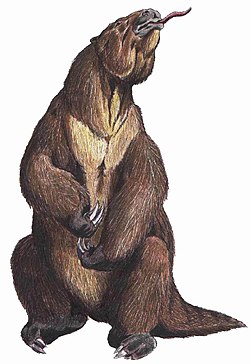| Australonyx Temporal range: Late Pleistocene (Lujanian) | |
|---|---|
 | |
| Skull | |
| Scientific classification | |
| Domain: | Eukaryota |
| Kingdom: | Animalia |
| Phylum: | Chordata |
| Class: | Mammalia |
| Order: | Pilosa |
| Family: | † Megalonychidae |
| Genus: | † Australonyx De Iuliis et al, 2009 |
| Species: | †A. aquae |
| Binomial name | |
| †Australonyx aquae De Iuliis et al, 2009 | |
Australonyx is an extinct genus of ground sloths, endemic to South America during the Late Pleistocene. It was found in Brazil. [1]


